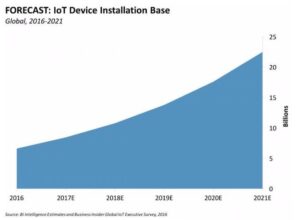As many technology giants and operators rush to the 5G market, we can’t help wondering how 5G will embrace and change our existing technology ecology?
In this regard, some netizens said that 5g replaced 4G, which can greatly improve the communication download speed; It is also said that 5g will show its skills in driverless, smart home and smart city, and the birth of 5G will rewrite the field of Internet of things.
1,Advantages of 5g
5G is a new generation of cellular mobile communication technology and an extension of 4G (LTE, wimax-a), 3G (UMTS) and 2g (GSM) standards. Compared with 2G that can make phone calls, 3G that can surf the Internet and 4G that can meet the needs of mobile Internet users, 5G that can be commercialized step by step is better in multiple performance, such as:
High data rate;
Low delay;
More energy saving;
Effectively reduce the communication cost;
Higher system capacity;
More reliable connection;
Average download speed 1Gbps, up to 20gbps
……
2,5G and IoT complement each other
And what is the connection between this and the IoT? In fact, compared with the Internet of things, 5G can be regarded as the relationship between 4G and the Internet.
Now, according to the forecast data of business insider, the number of Internet of things devices installed will show explosive development in the next few years:

By 2021, it is estimated that there will be 22.5 billion connected IOT devices.
In the face of such a huge ecosystem, 5g with low delay, high speed and high capacity is an excellent choice.
Based on this, what changes will 5G, which is full of expectations, bring to the Internet of things in the era of the Internet of things?
1,smart city
5G will be more widely used in the smart city plan, from waste management, traffic monitoring to gradually intelligent medical facilities.
As more and more sensors enter the urban infrastructure, the smart city will fully benefit from the new generation network. After all, 5G can not only handle a large amount of data load, but also integrate various intelligent systems to continuously achieve communication interaction and realize the vision of a truly networked city.
2.Autopilot
In the future, automatic driving will be an important direction of the combination of artificial intelligence and the Internet of things.
Based on the technology of Internet of vehicles, sensors on autopilot generate large amounts of data, including temperature, traffic condition, weather, GPS location and so on. The data generated will consume a lot of energy. Besides, self driving cars also need to rely on real-time transmission of information to provide the best service.
Today, with high-speed connections and low latency 5G, autopilot can automatically collect all kinds of data, including time critical data, and the algorithm can automatically track the working conditions of vehicles and improve future design on these data.
3.Medical & Care
As various medical devices become a part of the application of the Internet of things, services in the medical field will also be improved. Rural areas that currently lack medical facilities and other similar remote areas will also greatly benefit from Internet of things connectivity. With the popularity of 5g with such low delay, remote surgery will be possible in the future.
4.Logistics
5G connection will make it possible for complex IOT tracking sensors, thus changing the end-to-end logistics operation process. 5g has the characteristics of high speed and low delay, which can collect data in real time, so as to detect all links of logistics.
5.Retail
Based on the era of mobile Internet and the popularity of smart phones, the arrival of 5g will create a better experience for users. For the retail industry, better connectivity and more devices connected to the Internet of things can help developers improve digital signage to interact more easily with shoppers.
Moreover, 5G will also effectively improve the network connection in the field of augmented reality and virtual reality. New retail is also one of the main application fields of augmented reality and virtual reality
